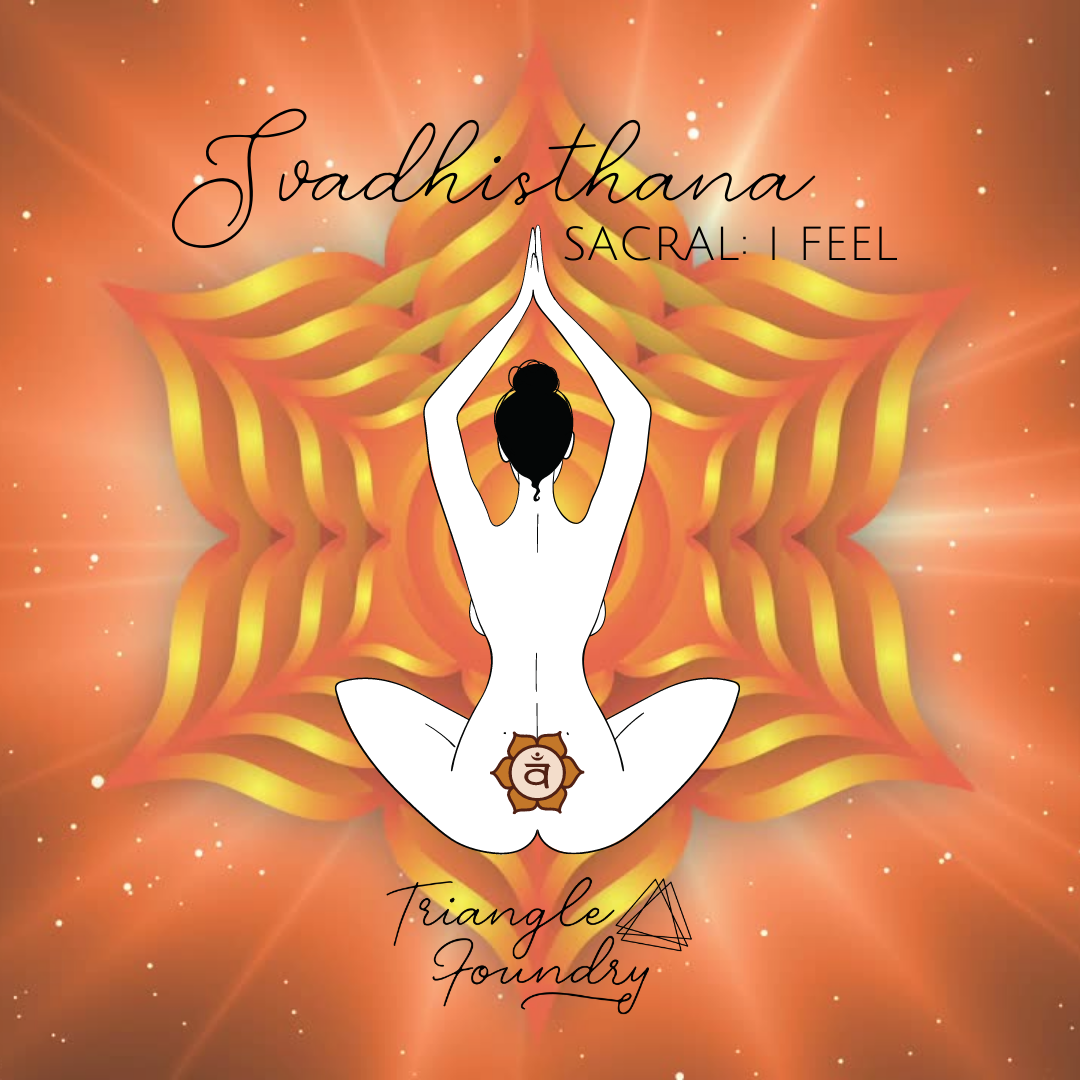The Chakras: Sacral (Svadhisthana)

Svadhisthana (meaning “where your being is established” in Sanskrit) is also known as the Sacral Chakra.
This chakra is positioned a few inches below the navel, at the lower belly and inner pelvis. It’s strongly linked to the water element, and holds direct focus on flow, flexibility, and freedom of expression in terms of emotion, sensuality, and passion. The sacral chakra is identified on the chakra spectrum by the color orange. It is often represented by the lotus flower; its petals are considered to be representation of the cycles of birth and death.
The sacral chakra is considered to be what drives one’s overall enjoyment of life. As energy flows through the sacral chakra, one holds the potential to tap into limitless creative power, a healthy connection with pleasure, and the comprehension of one’s deepest wants, needs, and emotions. It encourages the development of our relationship with others, as well as our relationship with the self, through effective self expression and enforcement of boundaries.
A balanced sacral chakra is linked to the following:
- sensuality and intimacy
- giving and receiving pleasure
- creativity and self expression
- principles of non-permanence and synchronicity
- healthy expression of the inner child
- the divine feminine.
When the sacral chakra is imbalanced or becomes blocked, this can hold an impact on the body in a physical, emotional, and spiritual sense. This can specifically provoke somewhat extreme emotional highs and lows, the inability to experience intimacy in any capacity, or an overall lack of self confidence. When the sacral chakra is blocked, it can also keep one closed off from new opportunities and discourage the creative flow.
Some physical indicators of an imbalanced sacral chakra include:
- reproductive complications
- menstrual complications
- impotence
- complications of the bladder and kidneys
- complications of the pelvic region
- complications of the lower abdominal region
- discomfort with intercourse
- chronic low back pain.
Some emotional indicators of an imbalanced sacral chakra include:
- extreme emotional highs and lows
- detachment and escapism tendencies
- inappropriate expressions of sexuality
- obsessive affection that is not reciprocated
- tendencies of codependency
- difficulty with self expression
- low libido or disinterest in sex altogether
- lack of creative inspiration.
The blocked sacral chakra also holds the potential to evoke shadow work opportunities. These are often identified through the demonstration of:
- wounded emotions
- secrecy
- repression
- impulsivity
- inability to experience emotional or sexual intimacy
- inability to remember or comprehend dreams.
There are different options to activate and balance the sacral chakra, including movement, sound, touch, meditation, and breathwork. Any simple practice to invoke emotional catharsis could hold exceptionally positive impact on the realignment of this chakra; the surge of emotions with laughing, crying, or screaming could hold the potential to activate the sacral chakra as they flow through the body. Mantras that include the seed sound “vam” can activate the sacral chakra, as well.
Some affirmations to use throughout meditation when working with the sacral chakra could include:
- I trust myself and my emotions.
- I am safe to express myself.
- I allow my creativity to flow freely.
Crystals may also be effective in the effort to balance the sacral chakra. Some of the crystals that resonate most with the sacral chakra include:
- citrine
- carnelian
- tiger’s eye
- orange calcite
- coral calcite
- autumn jasper
- moonstone.
Some yoga shapes that work with your sacral chakra include:
- Baddha Konasana (Seated Butterfly)
- Malasana (Garland)
- Mandukasana (Frog)
- Smooth flowing transitional movements (works with the moving water element of the sacral chakra)
- Utkata Konasana (Goddess).
It could be beneficial to balance the sacral chakra in order to effectively determine our individuality as we respond to the experiences of our lives with our emotions. These responses are the context to who we are, what we desire, and where we are in our journey through this lifetime. Your effort to balance your sacral chakra is the most effective method to develop your sense of creativity and freedom of expression.
While the chakra system has been recognized within spiritual traditions throughout history, it is worth the note that there is no scientific evidence to support any of this information at this time.






